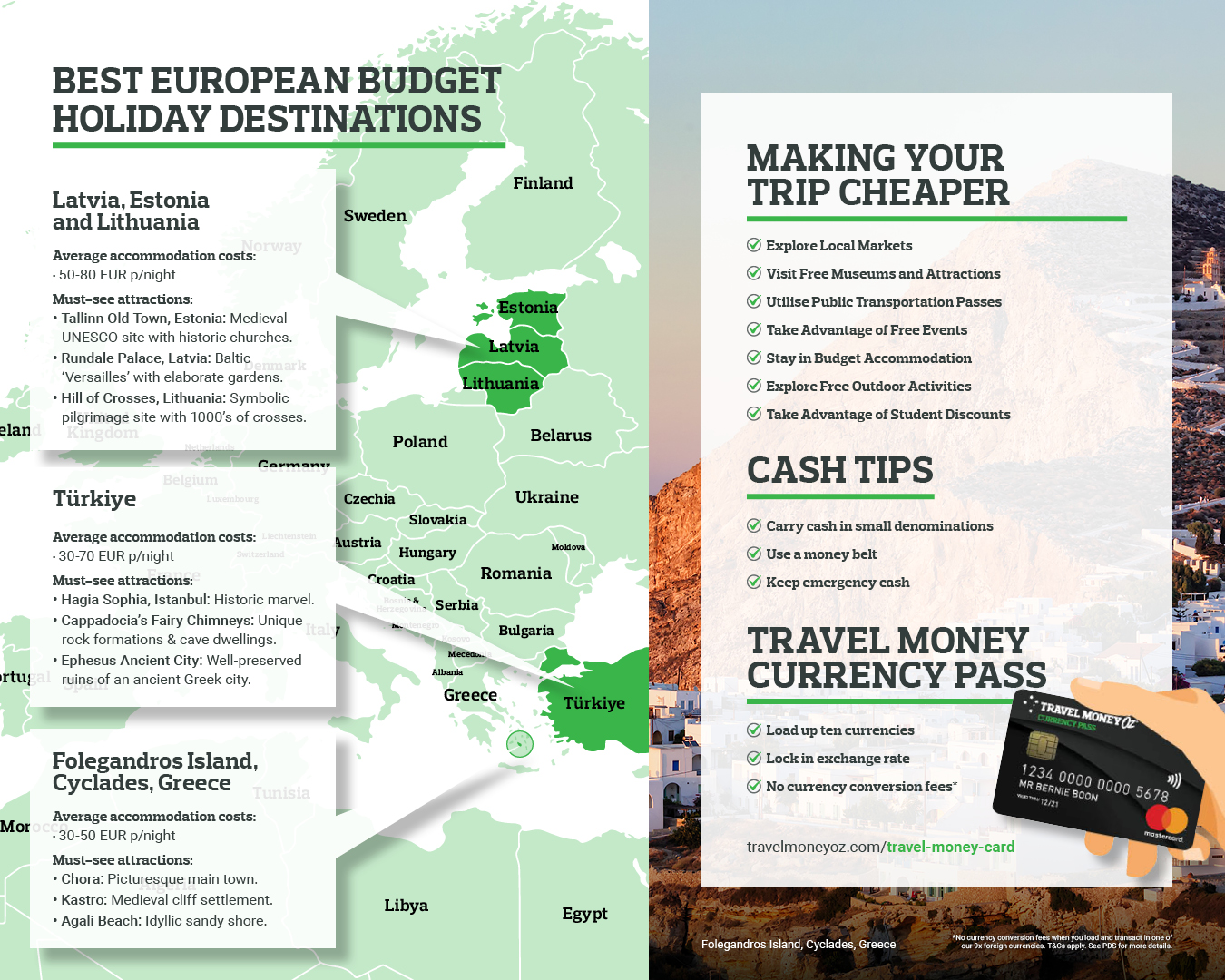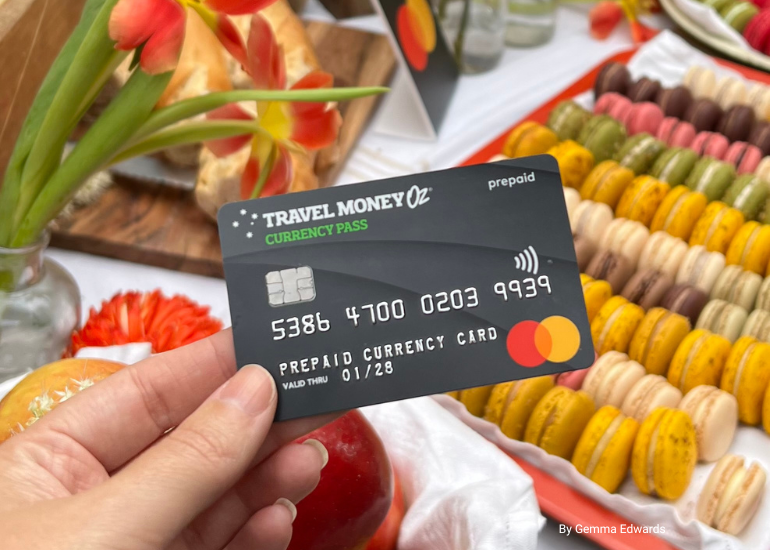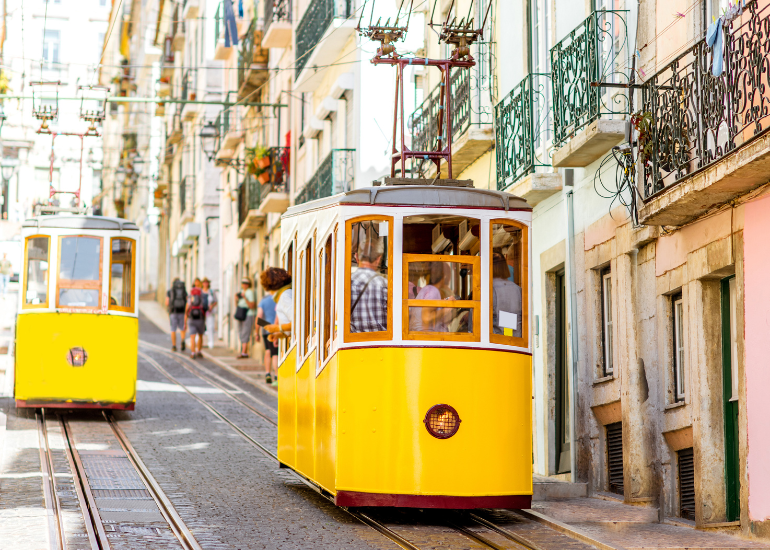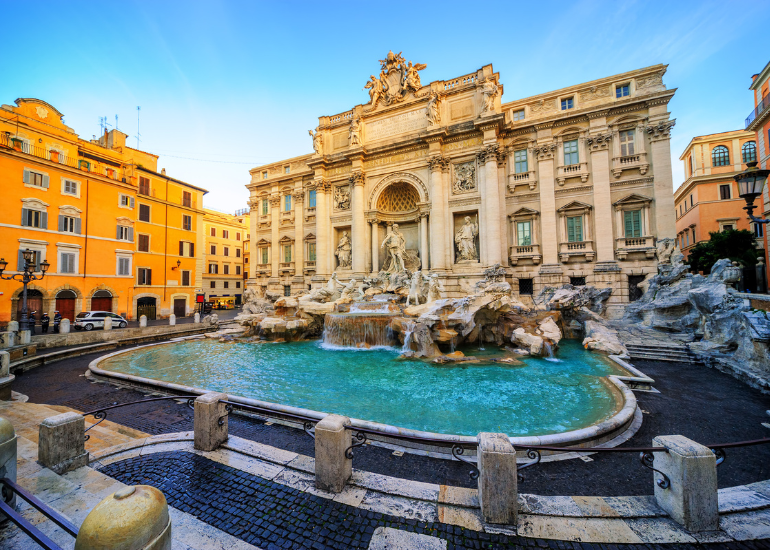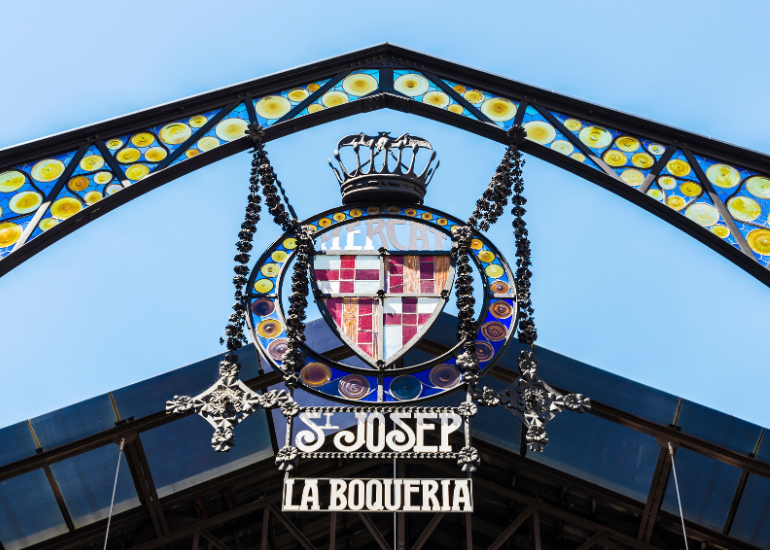Planning is key: top tips for booking a budget holiday in Europe
The cheapest time to travel to Europe
If you scroll through your socials any time from June to August, you’ll see an influx of Aussies on #eurosummer trips. Once you’ve spent time contemplating how they afford it in peak season, go to your calendar and block these dates out if you’re on a budget. Demand in this period is high and these are expensive months to travel to Europe.
If you want the Euro summer experience without the huge price tag, then travelling in the ‘shoulder seasons’ of spring or autumn will offer considerable cost savings. Even a few weeks can make a difference.
It’s also worth geeking out on the weather apps to see how long you can stretch out the summer experience. If you want to be living la dolce vita on the island of Capri in Italy, for instance, October still offers a relatively balmy average high of 23C, while saving you money.
If you’re not tied to a summer trip, Europe has plenty to offer all year round. However, you’ll still want to avoid travelling over major holidays like Christmas. If you don’t have little ones in tow, then try to skip school holiday periods entirely, as flight costs from Australia will spike during those weeks, too.
The best European budget holiday destinations
Just like in real estate, it’s all about location, location, location. The big hitters like Italy and Greece are always going to be expensive during the summer months. If you want to get similar Euro vibes, without the high price tag, it can be worth looking further afield.
Are you craving the rich culture and history of a city like Rome, but don’t want to shell out for wildly expensive accommodation? There are a bunch of other hotspots across Europe to consider. You could explore the cultural hubs of Latvia, Estonia and Lithuania (see our guide to the Baltics here) or get your ancient history fix where Europe meets Asia in Turkey. Sure, it’s hard to beat the charm of the Spanish Steps or the grandeur of the Colosseum but you certainly won’t miss the crowds or the prices.
You could also look for lesser known locations in your country of choice. The Greek Islands are the perfect example. If you’re dreaming of Santorini sunsets but want to save money, hop on a ferry and try another island, like Folegandros, instead. You’ll get the same sparkling blue seas, an authentic Greek experience and cheaper accommodation to boot. Bonus: you might actually be able to find a spot on the sand to roll out your towel and a seat at a taverna for sunset.
Consider your currencies to save money in Europe
While you’re thinking about what you’ll need to pay for on holiday, also consider how you’ll pay for it while overseas. This is an area where a few simple tricks can really keep your Euro trip budget in check.
Do your research on local currencies
Don’t wait till the day of your departure to figure out your finances. Make sure to do your research and get your local currencies in advance. Of course, most countries in Europe use the Euro, but there are a few exceptions. For example, if you’re headed to the glorious alps, you’ll be fine with Euros for Italy and Austria, but they’ll be less useful in Switzerland (where you need the Swiss Franc). Having it all mapped out before you go can save you from some uncomfortable conversations and even more uncomfortable credit card fees.
Get a travel money card to save on exchange fees
Speaking of, instead of relying on your credit card, having a travel money card like our Travel Money Oz Currency Pass, can mean serious savings in Europe. Lock in your exchange rate, load up your card with local currency and avoid conversion fees at your destination. You can add up to 10 currencies on your card in advance and don’t forget to factor in your stopovers. Trust us, having some currency for snacks on your Singapore layover can be a lifesaver, especially if you have some hangry toddlers in tow! You can track your balance on our website, just like internet banking, which is a great way to monitor your budget while travelling across Europe. And if you are headed to a destination where the currency isn’t available on card, load up in AUD instead and when you select “local currency” it’ll exchange at the best rate Mastercard can provide at the time!
Sometimes, cash gets you cheaper prices!
Last but not least, when you’re doing your research, make sure to check if cash or card is preferred. Sometimes, you can even get a cheaper price when you pay in cash instead of card – a workmate of ours got a 20EUR discount on her sailing tour in Greece just for paying in cash! Cash also comes in handy when it comes to tipping, local markets, paying to use the bathroom and areas with poor signal. We always recommend taking a blend of cash and travel card for your travels – and we have a breakdown on recommended splits in this blog.
Book your European holiday in advance
Booking ahead pays off, especially when it comes to flights. While some transport and services can be cheaper to sort out when you arrive at your destination, flight costs tend to increase exponentially as the travel date draws near. This is critical in summer periods and over major holidays. It’s also worth looking up the attractions that you plan to target to see if you can score early-bird discounts. Plus, you’ll get to skip the ticket queue, too.
Set a budget for Europe – and stick to it
It sounds obvious, but the key to a budget holiday is setting an actual budget beforehand. Figure out how much you’re willing to spend and work backwards from there. Don’t forget hidden costs either, like insurance, visas, and taxes. It helps if you decide on your non-negotiables – i.e. can you settle for more basic accommodation so you can splurge on special experiences at your destination?
This Budget Planner tool is a useful starting point, along with our guide to how much it costs to travel in Europe.
Going on a tour can be another frugal travel strategy in Europe, as major expenses like accommodation, transport, attractions and even meals can be packaged up and paid for upfront. Bigger tour providers often get group discounts, too. When it comes to tours, it’s certainly worth doing the research ¬– and the sums. It may lead to savings for some travellers, but it won’t always be the cheapest option.
How to find budget accommodation in Europe
You might associate hostels with rickety bunk beds, shady roommates and all night raves. If that’s your thing – good for you, book with abandon and save those dollars. But if it isn’t, don’t rule them out just yet. Hostels have come a long way – turns out ‘poshtels’ are even a thing.
There are hostels scattered throughout Europe that offer up the big benefits, like affordable rooms, kitchen and laundry facilities and central locations, without compromising on quality. Many cater for families or have private rooms if you’ve moved on from dorm life. Along with major chains like Meininger and A&O (they have 40 hostels in 25 cities across Europe), there are also ‘boutique hostels’ across the continent.
Another way to save cash on your Europe trip is to book accommodation with self-catering facilities. Eating out at every meal really adds up, so booking a rental home or even a room with a few basic kitchen appliances can make a difference.
Be smart about the way you book accommodation. Many options, whether it be hotels, hostels or rental homes, are cheaper if you go direct. It can also be easier to troubleshoot any issues with your booking this way, too.

